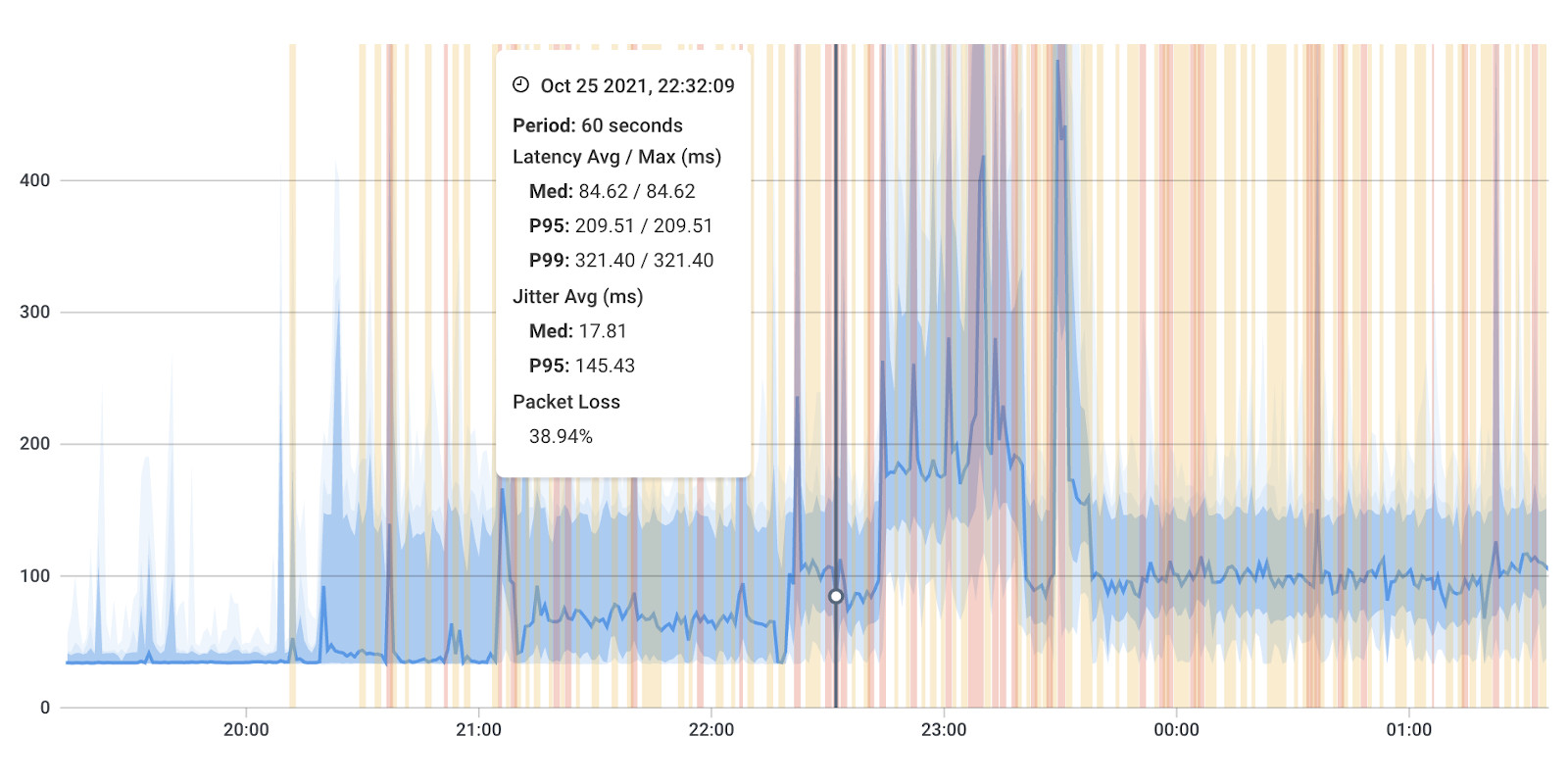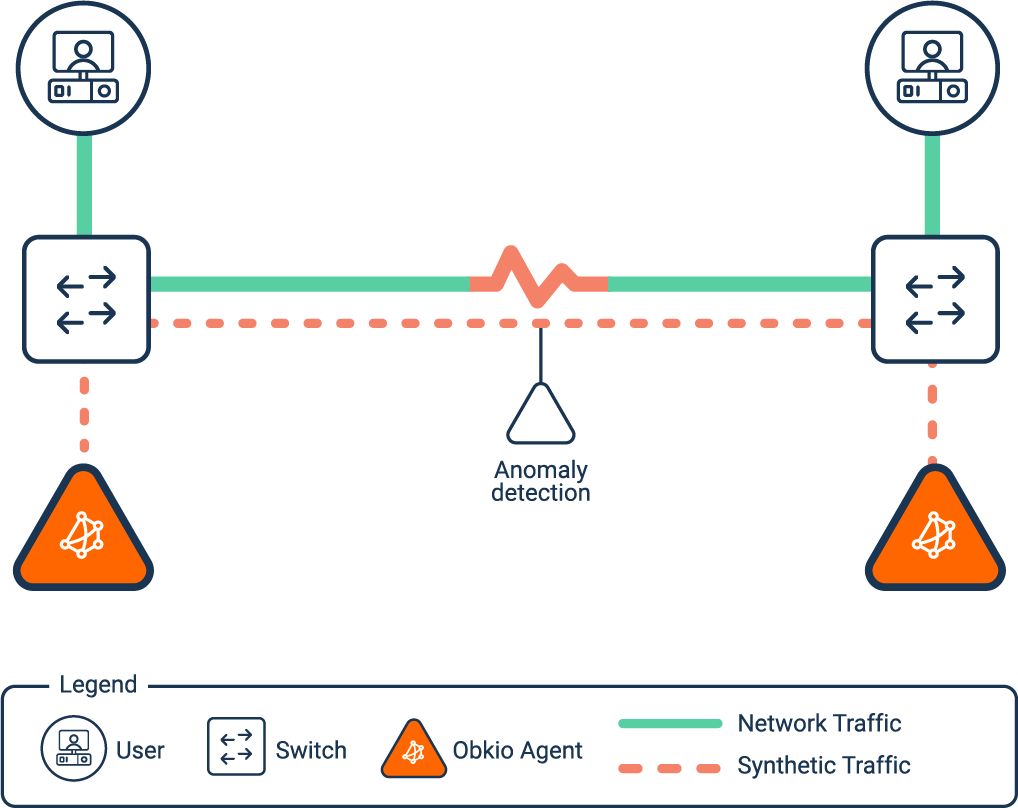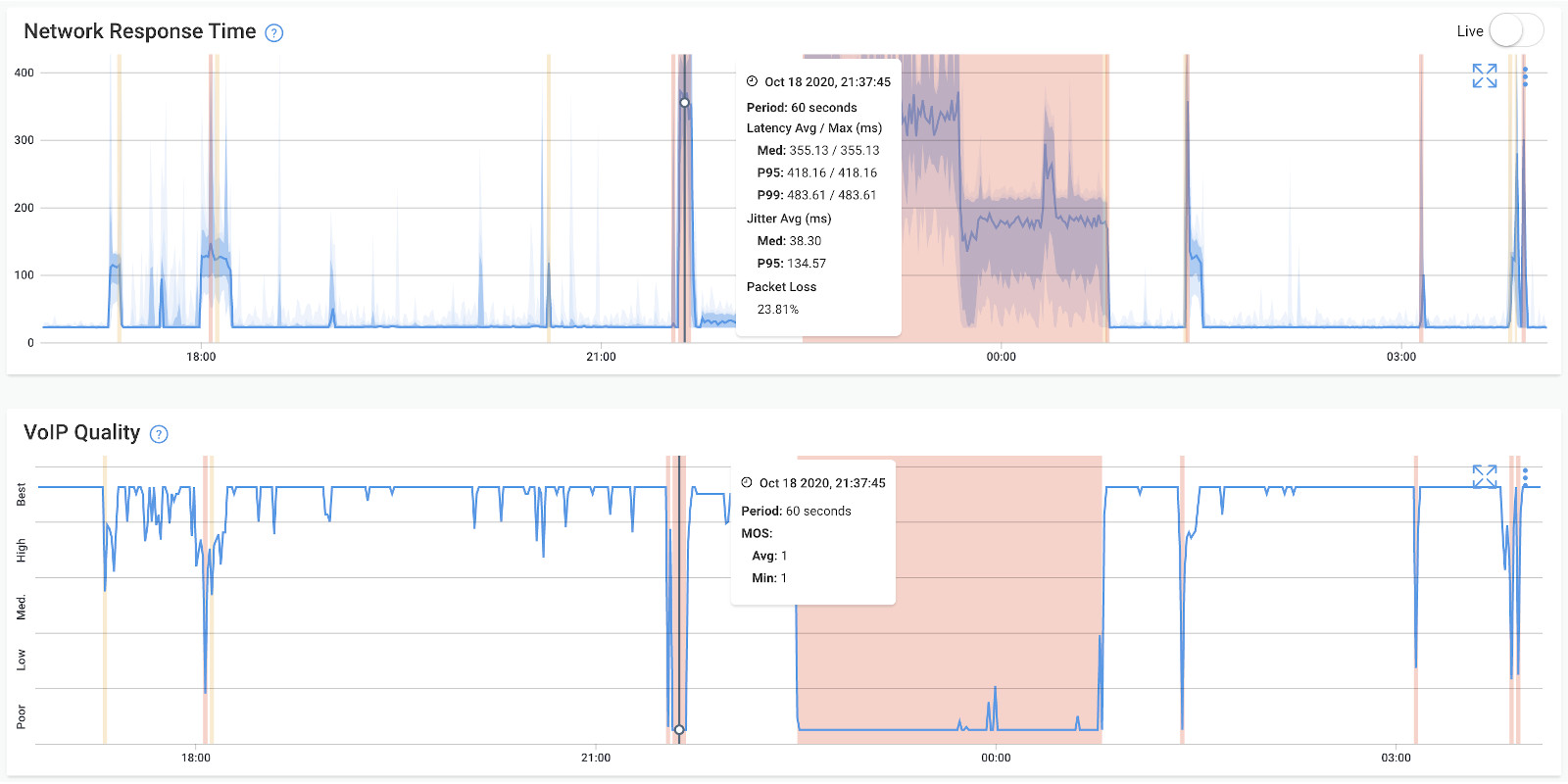
In the fast-paced realm of IT businesses, it's easy to overlook the intricate web that powers your operations – your network infrastructure. Let's face it, most enterprises only give it the attention it deserves when something goes wrong. And by then, the issue has often snowballed into a full-blown crisis. Maybe you've been grappling with persistent performance bottlenecks, perhaps you've stumbled upon alarming security gaps within your network or the deployment of a new service doesn’t go as planned. It's a common scenario. But fear not, because this is precisely where the importance of a Network Assessment comes into play. In this article, we'll delve into the ins and outs of assessing your network health and performance, providing you with a comprehensive reporting template.
A thorough understanding of your network's pulse, helping you make savvy decisions for your business. Whether you're grappling with existing issues, seeking opportunities for enhancement, or simply looking for a panoramic view of your network's performance, a network assessment equips you with the insights needed for strategic decision-making.
But the real magic lies in the choices it empowers you to make. Consider the scenario: contemplating a migration to a new network infrastructure. It could be a shift from the traditional MPLS network to the dynamic realm of SD-WAN, or perhaps a leap from an on-premise ERP system to the nimble embrace of a cloud-based ERP solution.
Maybe you're gearing up to deploy a game-changing service, like a hosted VoIP platform, or diving into the future with the implementation of a Secure Access Service Edge (SASE) network. Network assessment reporting will empower you to proactively address issues, strategically plan migrations, and navigate the ever-evolving landscape of network technologies.

Enter the realm of strategic documentation – the network assessment template, a structured blueprint designed to illuminate the key facets when presenting the outcomes of a network assessment. Think of it as the roadmap for Managed Service Providers (MSPs), IT professionals, network admins and any other service providers, ensuring a systematic and thorough evaluation of all crucial components of their network. This template not only acts as a safeguard against oversight but also guarantees that the findings are conveyed consistently and comprehensively. In a world where cyber threats loom large and organizational capabilities often lag behind, the EY Global Information Security Survey (GISS) reports a staggering 87% of organizations find themselves grappling with insufficient budgets to bolster their capabilities. To add to the complexity, many of these organizations lack a clear grasp of the network topology and significance of their most critical information and network assets. It's a digital blind spot, leaving them vulnerable without adequate safeguards. This is where the network assessment template emerges as a knight in shining armour for MSPs. Picture this: an arsenal of information lying asleep within your network, waiting to be awakened. Without proper documentation, many organizations remain in the dark about their infrastructure's standing and struggle to optimize their technologies in alignment with business goals. In essence, the network assessment template isn't just a fancy report, it's a strategic path to well-documented, secure, and optimized network performance monitoring.

At the heart of a seamlessly executed network assessment lies the crucial step of pinpointing the foundational services and vital components steering your business objectives. These objectives range from fortifying weak network links to strategic capacity planning, gearing up for proactive troubleshooting, or simply conducting a health check to ensure optimal returns on your current investment. But the journey doesn't end there. For many MSPs, the assessment serves as more than just a diagnostic tool. It provides a solid foundation, empowering them to scrutinize emerging technologies with confidence. They delve into questions of value addition, exploring how these technologies can seamlessly integrate into the existing network framework and understanding the ripple effects they'll have on the environment, ultimately culminating in an enhanced user experience.

Unlock the full potential of your network assessment journey with our step-by-step process for a comprehensive understanding of your network infrastructure. Tailored specifically for MSPs, our dedicated template is your go-to resource that provides the structured framework needed to guide you through the assessment process.
Embarking on a network assessment journey without a solid plan is akin to setting sail without a compass. Preparation and thoughtful planning are the wind in your sails, providing direction, clear objectives, and a strategic game plan that ultimately shaves precious time off the assessment process. As you gear up for your network assessment, it's crucial to have a roadmap in mind. Here are some aspects to consider: Network Assessment Objective: Define the “WHY” behind your network assessment. Are you aiming to unravel the mysteries of intermittent disruptions plaguing network performance? Perhaps optimization is on your agenda, or maybe you're simply conducting a preemptive health check to proactively steer your network away from potential pitfalls. Network Assessment Expectations: Once the objective is clear, set your expectations. Do you envision a comprehensive report detailing the current state of all network metrics? Maybe you're seeking a list of strategic recommendations, or your goal is to pinpoint the elusive cause behind a repeating network issue. Network Assessment Method: The 'HOW' matters. Analyzing every nook and cranny of your business manually is not just time-consuming but also a Herculean task. Fortunately, a plethora of software options exist to conduct a network assessment efficiently. Before diving in, weigh your options and choose the method that aligns best with your goals and resources.

Network Users:
Network Devices:
Network Infrastructure Assessment:
Network Bandwidth:
Network Traffic Load:
Network Servers:
Network Storage Capacity:
Network Backup and Recovery:
Network Security Measures:
Network Uptime:
Network Performance Metrics:

Network Maintenance and Upgrades:
Network Policies and Procedures:
Network Access and Permissions:
Network Costs:
Embarking on a solo mission to conduct a network assessment template might sound like a bold move for some businesses, but the truth is, that you don't have to navigate this terrain alone.
Trying to monitoring your network infrastructure without the right network assessment tools can be not only time-consuming and lacking in detailed insights but also fraught with the risk of human error. Manual assessments often fall short, leaving you without complete visibility of what's really happening in your network.
That's where your Network Detective comes into play, and in our case, it goes by the name Obkio Network Performance Monitoring – a top-tier network assessment tool. Unlike manual assessments, which inadvertently introduce inaccuracies, Obkio provides a 360-degree view of your network with maximum precision.
Obkio is your ally in the quest for a seamlessly performing network with optimization that goes beyond the basics. Here's how:
Strategic Deployment: Network Monitoring Agents strategically positioned at key network locations act as the eyes and ears of your operation.
Constant Evaluation: Obkio doesn't just sit idle; it actively sends and monitors synthetic data packets through your network every 500 milliseconds, ensuring a real-time evaluation.
Data Collection Mastery: The Agents, working diligently, collect valuable data about your network health, providing you with a comprehensive understanding of its inner workings.
Why settle for uncertainty when you can leverage the power of Obkio's Network Monitoring?
This tool doesn't just identify performance issues, it's your proactive ally in spotting potential weaknesses that could rear their heads in the future.
Curious to witness the transformation?
Dive into Obkio's free trial, where you can conduct a no-obligation network assessment (POC). It's your chance to swiftly determine if your network is causing headaches and gather the insights needed to troubleshoot network issues effectively.


Discover how ThinkTel, a company specializing in cutting-edge hosted and on-premises services encompassing voice, video, conferencing, and data solutions for the Enterprise, Carrier, and SMB markets across Canada, utilizes Obkio's Network Performance Monitoring solution.
This strategic implementation allows ThinkTel to assess the network capabilities of clients meticulously. The focus is on determining the network's ability to support the specific demands of Real-Time Media, providing the confidence needed to seamlessly deploy Unified Communication solutions.
Problem:
For service providers like ThinkTel, ensuring success involves conducting a thorough readiness assessment of clients' network infrastructure tailored to the specific demands of Real-Time Media workloads associated with emerging services.
This crucial step is taken proactively to mitigate risks, considering the unfortunate scenario where companies invest significant time and resources in a Unified Communications deployment only to find it falls short of delivering the expected voice or video experience.
Solution:
Recognizing the importance of preparing clients for these advanced services and aiming for a seamless technology adoption experience, the ThinkTel team acknowledged the necessity of performing a network assessment. The primary goal is to gauge the capacity of a company's WAN infrastructure, ensuring it can robustly support the demands of new business communication services.
In particular, ThinkTel aimed to harness the capabilities of Obkio's solution, integrating it into their Real-Time Media Assessment. The goal was to acquire more expansive data concerning their clients' network performance, enabling them to swiftly pinpoint and resolve any potential network issues before the deployment of new Unified Communication (UC) services. Through Obkio's dedicated solution for UC Monitoring, comprehensive data on the metrics that significantly impact UC applications is made available, enhancing ThinkTel's ability to ensure a seamless and optimized experience for their clients.
“We wanted a scalable way to perform network assessments for multi-site clients, who face unique challenges at each location. When we started using Obkio for our own complex network, we learned very quickly that these tools are what our customers need as well.”
Jim Dawson VP of Enterprise Sales, ThinkTelObkio empowers service providers such as ThinkTel to proactively minimize post-deployment risks by swiftly identifying issues. This proactive approach allows clients to resolve potential issues before the new service is deployed and the migration process is finalized.
Furthermore, ThinkTel's clients can continue to leverage Obkio for ongoing network performance monitoring even after deployment. This ensures that their newly implemented systems consistently operate at optimal performance levels, providing a reliable and efficient experience over time.
ThinkTel Network Assessment for UC Deployment Case StudyLearn how ThinkTel uses Obkio Network Performance Monitoring to perform a network assessment of users’ network capacity to deploy new communication services.
Now, it's time to roll up your sleeves and dive into the heart of the matter. In this section, we'll guide you through the practical steps of assessing your network, providing you with the tools and insights needed to unravel its intricacies.
Monitoring your network is a pivotal aspect of network assessment, involving continuous surveillance of network traffic, system performance, and overall network well-being. The primary goal of network health monitoring is twofold: to pinpoint potential issues and anomalies in the network's behaviour and to collect data for in-depth analysis and performance enhancement.
Unveiling the intricacies of network monitoring involves various techniques:
Synthetic Monitoring:
Synthetic monitoring, also referred to as active or proactive monitoring, is a method for monitoring application and network performance. This technique involves simulating user activity with network resources to assess network performance and identify potential issues.

Utilizing network monitoring agents, and a synthetic Network Monitoring tool like Obkio, synthetic monitoring offers an authentic perspective from an end-user standpoint, enabling you to evaluate whether your application and network performance align with the expectations of your users.

Packet Sniffing:
This method revolves around capturing and scrutinizing the data packets traversing the network. Packet sniffers operate in real-time, offering insights into network performance, security, and user behaviour.
Network Flow Analysis:
Network flow analysis entails gathering data on traffic patterns, such as data transfer volume and frequency, and dissecting this information to identify trends and irregularities. This approach aids in recognizing potential network congestion, security threats, and other concerns.
Network Device Monitoring:
When conducting a thorough network assessment, it's imperative to scrutinize every facet of your network, encompassing critical network devices. A pivotal tool for this endeavour is the Network Device Monitoring feature embedded within Obkio's Network Monitoring Software, utilizing SNMP monitoring as a foundational element.
This feature empowers the monitoring of various network devices, including Routers, Switches, Firewalls, SD-WAN Edge Devices, and more. Its primary objective is to meticulously identify any issues potentially impacting network performance. Key parameters monitored include:
Through this detailed monitoring, your IT team gains the ability to swiftly detect anomalies such as short bursts of traffic, elevated CPU usage, bandwidth congestion, or network congestion. Rapid identification of these issues facilitates pinpointing the root cause of performance challenges, enabling timely and effective resolution.
Event Log Analysis:
Event log analysis involves scrutinizing system and application logs to unearth potential issues and security threats. This technique serves as a detective, capable of detecting unauthorized access attempts, malware infections, and other security incidents.
In essence, network monitoring emerges as an indispensable part of the network assessment template, helping to detect potential issues and security threats, and optimize overall network functionality. Utilizing a diverse set of monitoring tools and techniques, such as the Obkio Network Monitoring tool, empowers network administrators to ensure the smooth and secure operation of their networks.

A crucial aspect of obtaining a comprehensive network assessment is the analysis of historical performance data. To gain an accurate understanding of your network's performance, it is essential to scrutinize performance data over time, especially to capture intermittent issues. Historical data analysis provides a valuable context, akin to reviewing a network's performance history and evolution. This process involves measuring key network metrics associated with performance and compiling a historical record of the collected data. By delving into historical trends, you can establish a network performance baseline, allowing you to discern patterns, anomalies, and potential bottlenecks. This baseline becomes instrumental in setting thresholds for issue alerts, helping your network management team stay ahead of potential problems. Moreover, historical data analysis serves as a valuable tool for proactive troubleshooting. Understanding how your network has behaved over time empowers you to anticipate and address potential issues before they escalate. It's akin to having a detailed map of your network's journey, allowing you to navigate challenges with precision and foresight. In essence, historical data analysis transforms your network assessment into a dynamic and forward-looking process, providing insights that extend beyond the present moment and into the past context of your network's performance.

Picture your network as a bustling city, humming with activity. Now, just like a city needs smooth traffic flow, your network demands seamless performance. That's where the magic of measuring key network metrics comes into play – it's like having a traffic control tower for your digital metropolis.
Obkio, our network superhero, swoops in with metric updates every minute, offering real-time insights. It's akin to having a radar for your network's highways, instantly spotting any potential congestion or roadblocks.
To assist you in pinpointing issues and reporting network assessment effectively, Obkio employs aggregation to reveal the most severe metric measurements. This approach sheds light on where network problems are situated and what is triggering them.
For instance, in the case of testing packet loss, the packet loss exhibited over an aggregated span of 1 hour represents the highest level of packet loss among all the brief 1-minute intervals within that hour.
This is crucial because solely presenting the average packet loss on your network might obscure intermittent network issues. By highlighting the worst-case scenarios through aggregation, Obkio’s network assessment tool ensures that potential problems don't slip through the cracks, providing a more comprehensive view of your network's health.
19 Network Metrics: How to Measure Network PerformanceLearn how to measure network performance with key network metrics like throughput, latency, packet loss, jitter, packet reordering and more!